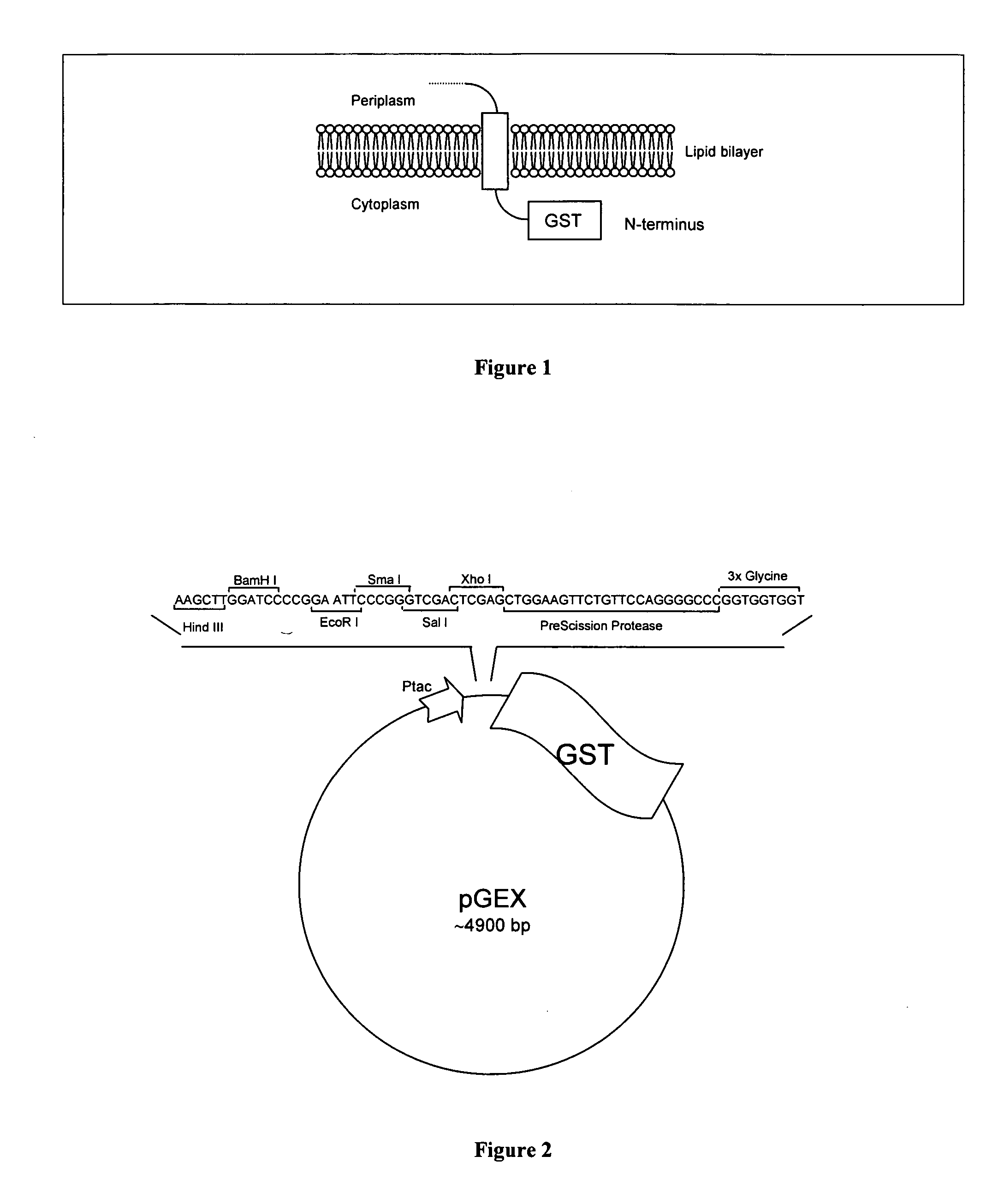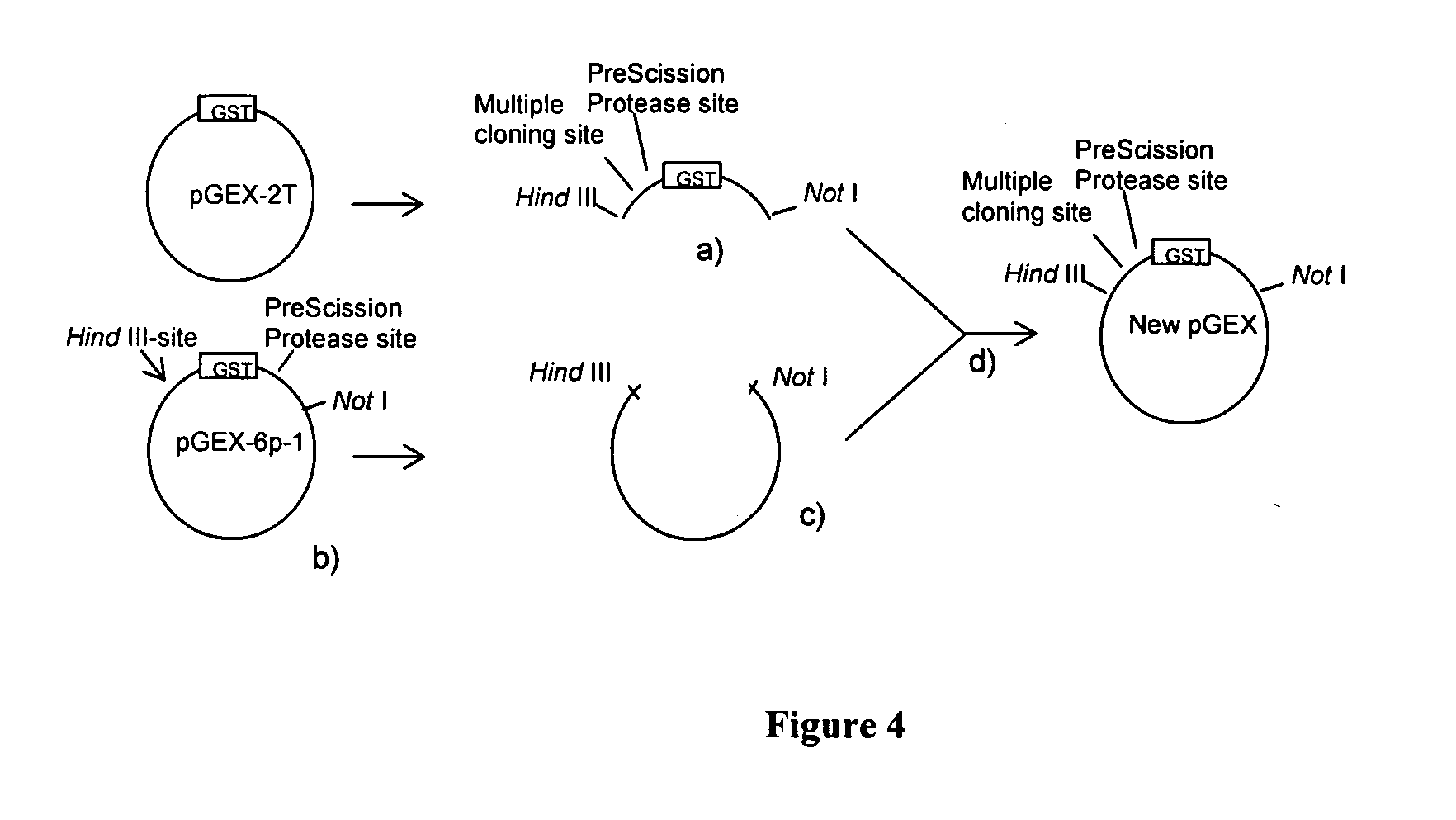Expression vector, host cell and method for producing fusion proteins
a technology of fusion proteins and host cells, applied in the field of expression vectors, can solve the problems of complex mechanisms behind the in vivo targeting and insertion of membrane proteins in the lipid bilayer, and the difficulty of bacterial system expression of many recombinant membrane proteins with n-terminal fusion tags, so as to avoid interference with the target sequence and achieve higher expression yield
- Summary
- Abstract
- Description
- Claims
- Application Information
AI Technical Summary
Benefits of technology
Problems solved by technology
Method used
Image
Examples
examples
[0045] Below, the present invention will be illustrated by way of examples. However, the present examples are provided for illustrative purposes only and should not be construed as limiting the present invention as defined by the appended claims. All references given below and elsewhere in the present specification are hereby included herein by reference.
[0046] Two commercially available GST-vectors (pGEX-2T and pGEX-6p-1) were used as starting points for construction of the new C-terminal GST fusion vector. The strategy was to construct a DNA fragment where the multiple cloning site and the PreScission Protease site were situated upstream the GST gene (the reversed GST cassette) and then clone the fragment into the pGEX-6p-1 vector. To accomplish this: a) the reversed GST cassette was amplified from the pGEX-2T vector with primers. The sense primer (SEQ ID NO 9) contained the sequence for the multiple cloning site, PreScission Protease site and also a Hind III site for cloning (FI...
PUM
 Login to View More
Login to View More Abstract
Description
Claims
Application Information
 Login to View More
Login to View More - R&D
- Intellectual Property
- Life Sciences
- Materials
- Tech Scout
- Unparalleled Data Quality
- Higher Quality Content
- 60% Fewer Hallucinations
Browse by: Latest US Patents, China's latest patents, Technical Efficacy Thesaurus, Application Domain, Technology Topic, Popular Technical Reports.
© 2025 PatSnap. All rights reserved.Legal|Privacy policy|Modern Slavery Act Transparency Statement|Sitemap|About US| Contact US: help@patsnap.com



